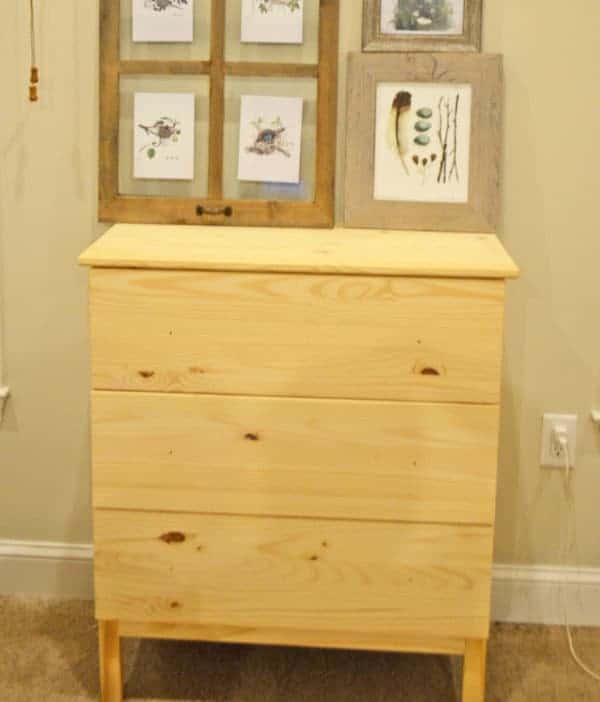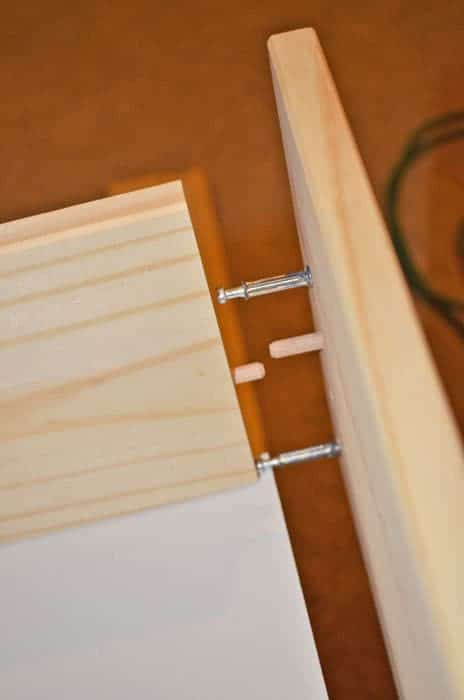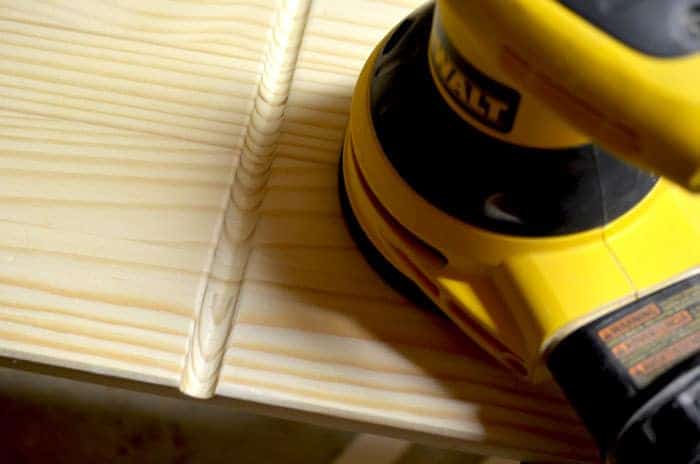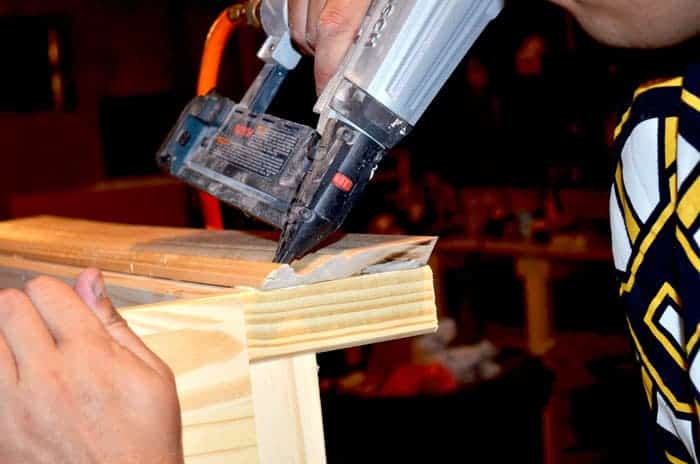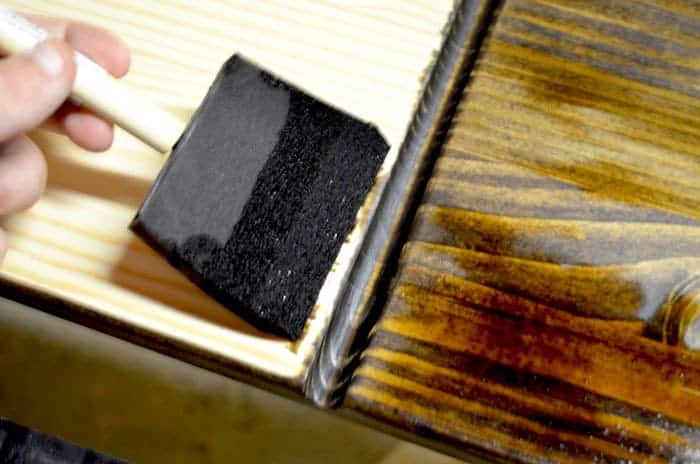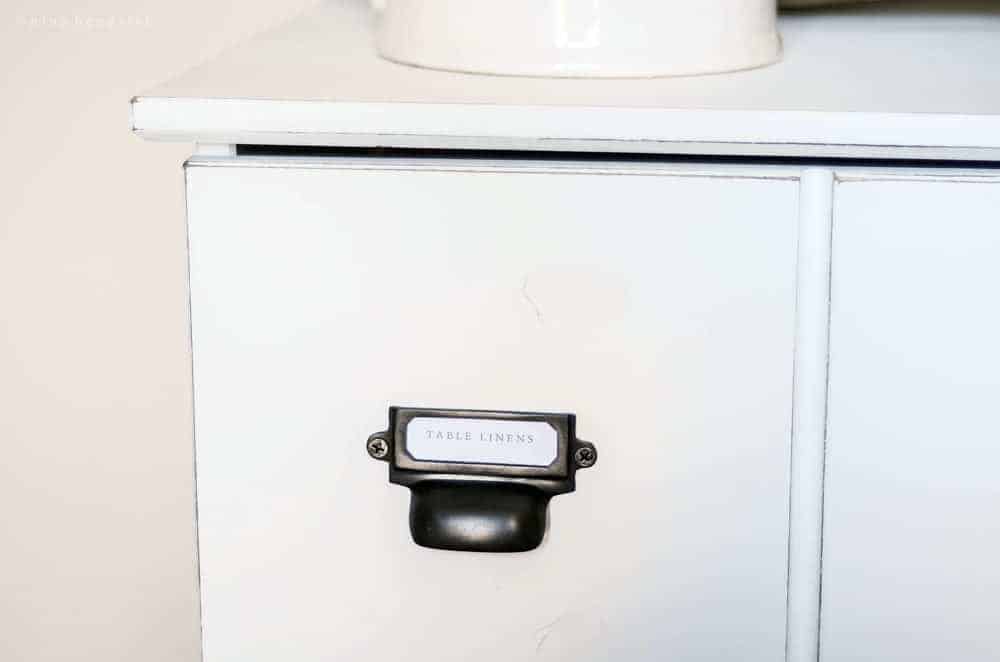Discover how to transform your Ikea dresser into a faux vintage card catalog with this budget-friendly Ikea dresser hack.
Today, I’m super excited to share a little project I’ve been working on: turning a plain wood dresser into something that looks like it’s straight out of an old library — a faux antique card catalog. This whole idea started because I’ve always had a soft spot for those charming old card catalogs you’d find in libraries, full of history and stories. But let’s be honest, finding a real one that doesn’t cost a fortune is pretty much like finding a needle in a haystack. So, I thought, why not make my own using an IKEA dresser? An Ikea Tarva dresser hack is way more budget-friendly than buying an expensive replica and adds such a cool, vintage vibe to the room.
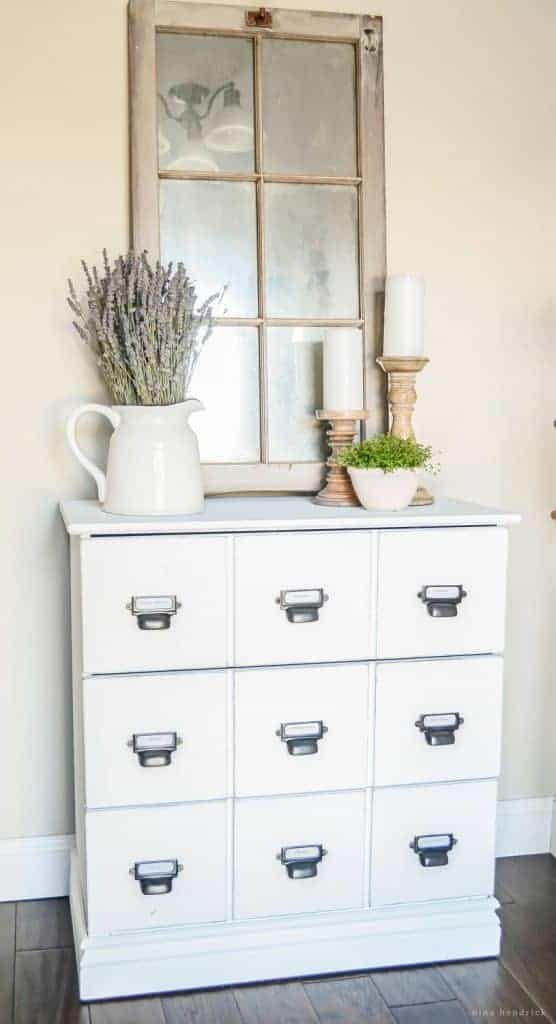
Note: While the IKEA Tarva dresser, the original star of this project, is currently not available, there’s good news on the horizon with rumors of its return in April. Meanwhile, this DIY project can be beautifully executed with the RAST 3-drawer dresser.
This isn’t just about making a piece of furniture look old; it’s about creating something that feels special and adds character to your space. If you love mixing a bit of the old with the new or just want a fun DIY project that won’t cost you an arm and a leg, you’re going to enjoy this. I’ll walk you through how to take a basic dresser and turn it into a chic piece that’ll catch everyone’s eye. Trust me, it’s a lot easier than you might think, and the end result is so worth it. Ready to give your space a little upgrade with a project that’s as fun as it is stylish? Let’s dive in!
Ikea Dresser Hack for a Faux Antique Card Catalog

Transform your IKEA RAST or Tarva dresser into a vintage-inspired card catalog masterpiece with this simple yet stunning DIY project. In just a few hours, you can add elegance and unique character to your home decor. This tutorial guides you through every step, from assembling your dresser to adding those final touches that make all the difference. With easy-to-follow instructions, you'll learn how to route detailed grooves, apply a rich wood stain, and finish with stylish brass pulls. Perfect for interior designers on a budget and DIY enthusiasts alike, this project promises to turn a basic piece of furniture into a focal point of your room.
Materials
- IKEA RAST Dresser (or Tarva, if available)
- 100 and 220 grit sandpaper
- Wood filler
- Wood glue
- Minwax Dark Walnut stain
- Brass label drawer pulls
Tools
- 3/8″ round nose router bit and router table
- Orbital sander
- Compound miter saw
- Nail gun
Instructions
- Assembly & Preparation: Start by assembling your IKEA dresser following the instructions. Though it might be tempting to skip steps, fully assembling the dresser ensures stability for the modifications ahead.

- Customizing Drawer Faces: Carefully remove the drawer faces and legs (if necessary) for modification. Using a router, add evenly spaced grooves to the drawer fronts to mimic the look of multiple small drawers, a hallmark of the card catalog style.

- Adding Detail and Depth: Sand the edges and surfaces to smooth out any roughness, preparing them for staining. This not only adds depth but also prepares the surface for a more uniform stain or paint application.

- Base Trim and Legs: Adjust the dresser legs to fit under the newly added base trim, cut at a 45-degree angle for a polished look. Secure with wood glue and nails, filling any gaps with wood filler for a seamless appearance.

- Staining: Apply wood stain or paint to achieve the desired antique look. Focus on the grooves and drawer fronts, allowing the stain to highlight the details and add character to the piece.

- The Finishing Touches: Install new hardware, such as brass label drawer pulls, to complete the transformation. These small details can significantly impact, elevating the dresser from a simple storage solution to a statement piece of home decor.

Notes
Before using the router on the drawer fronts, make sure to do a test run with a spare board to confirm your measurements.
This Ikea dresser hack not only saved me from spending over a thousand dollars on an antique card catalog but also allowed me to customize the piece to fit perfectly with my home’s aesthetic. By choosing the right stain, hardware, and applying a coat of paint, I gave this Ikea furniture a new life and a luxurious look on a budget. Whether you’re an avid DIYer or a beginner, this Ikea Tarva hack project proves that with a little creativity and effort, transforming Ikea dressers into bespoke pieces of furniture is within reach.
If you loved this IKEA dresser hack, you won’t want to miss my IKEA closet hack. It’s another budget-friendly makeover that can completely change the look and feel of your bedroom or entryway, giving you that custom-built vibe without the custom-built price tag.
So, if you’re ready to tackle more DIY projects and turn your home into a space that truly reflects your style, make sure to follow along. And hey, if you decide to give this dresser hack a try or have any other cool projects you’re working on, I’d love to see them! Share your photos and stories and tag me on Instagram. Happy hacking!


